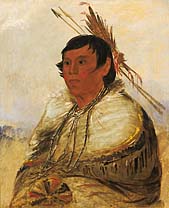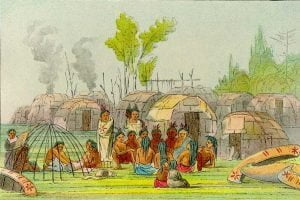Miami Indians
Miami is thought to be derived from the Chippewa word Omaumeg, signifying “people on the peninsula,” but according to their own traditions, it came from the word for pigeon. The name used by themselves, as recorded and often used by early writers, is Twigbtwees, derived from the cry of a crane. Also called: Naked Indians, a common appellation used by the colonists, from a confusion of twanh, twanh, the cry of a crane, with tawa, “naked.” Pkíwi-léni, by the Shawnee, meaning “dust or ashes people.” Sänshkiá-a-rúnû, by the Wyandot, meaning “people dressing finely, or fantastically.” Tawatawas, meaning “naked.” (See Naked … Read more


